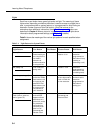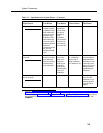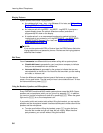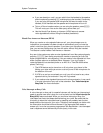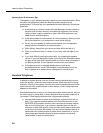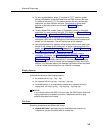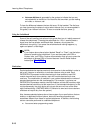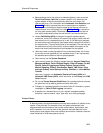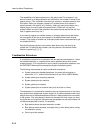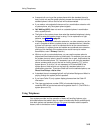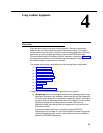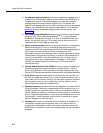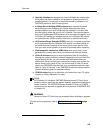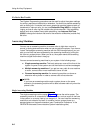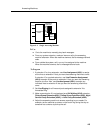
Learning About Telephones
3-12
The capabilities of a feature phone are
in the phone itself
. For example, if you
store a number on a feature phone’s auto dial button, that number is stored
in
the
feature phone. (This is different from storing a number on a system phone’s Auto
Dial button. When you program a button on a system phone, the number is
actually stored in the control unit.) Similarly, when you press a hold button on a
feature phone, the call is held at the phone itself. (Callers will not hear the
system’s Music-on-Hold. Other phones in the system cannot see that the call is on
hold; it appears as a busy line.)
If you want to program an outside number on a feature phone’s auto dial button,
you must add a 9 and one or more pauses (if available) before each outside
number. (The 9 gets an outside line, and each pause allows a few seconds to get
an outside dial tone.)
Note that the feature phone’s last number redial button may not work for an
outside call. To redial the last number, use the system’s Last Number Redial
feature by pressing
# 0 5.
Combination Extensions
A
combination extension
is an extension with two devices connected to it—either
two standard devices, or a system phone and a standard device (but
not
two
system phones). (For instructions on how to install a combination extension, see
the
PARTNER Advanced Communications System Installation
guide.)
The following are examples of useful combination extensions:
■ System phone plus standard telephone, for power failure backup on
extensions 10, 11, and the first extensions of any 206 or 308EC Module
■ System phone plus answering machine
■ System phone plus fax machine
■ System phone plus headset
■ System phone plus an external alert (such as a bell or chime).
The telephones in a combination extension share a single extension in the same
way several home telephones share a single line. A system telephone works as it
always does and a standard telephone works as it always does when connected
to the system.
Only one phone or device can be used at a time
, unless you want
to join the two on a single call (the same way two people can pick up the same call
on different telephones at home). For example:
■ Both phones share the same extension number.
■ Both phones share the same
voice path
; that is, when either phone is busy,
the extension is busy.
■ Calls ring at both phones.



